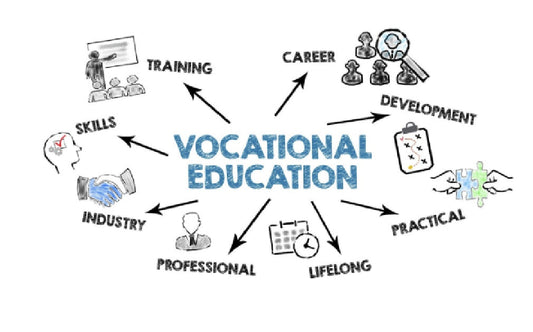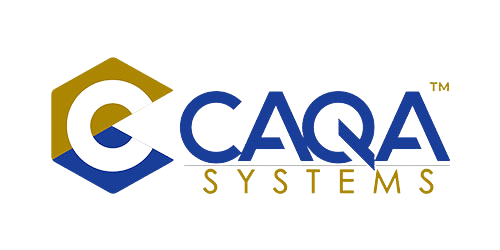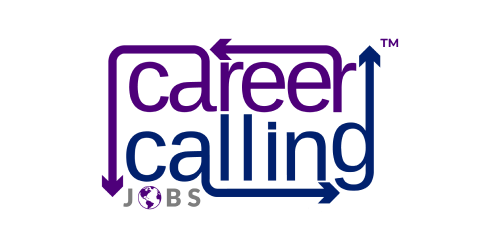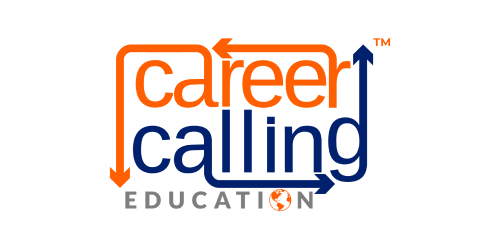Australia’s technology conversation in 2025 is no longer about novelty. It is about scale, trust, and value. MIT Technology Review’s “10 Breakthrough Technologies” list has become a useful annual lens on where scientific promise is turning into real-world impact. Read that list with Australian eyes, and a few themes stand out. Data-rich science is arriving at an industrial scale, artificial intelligence is migrating from the cloud to devices we carry, decarbonisation is shifting from strategy to projects you can visit, and biomedicine is edging toward cures rather than management. What follows is a guided tour of the 10 picks, what they actually are, why they matter, and how leaders in Australian government, industry, research and training can act on them now.
A new eye on the universe, and a flood of open data
The Vera C. Rubin Observatory in Chile will soon begin the Legacy Survey of Space and Time, a decade-long movie of the southern sky that will transform astronomy and data science alike. Rubin houses the world’s largest digital camera at 3.2 gigapixels and is engineered to generate roughly 20 terabytes of data a night. The scientific goals are profound, from mapping dark matter to tracking near-Earth asteroids, yet the story for Australia is also about data infrastructure and skills. Local universities and supercomputing centres will want to arm students with the literacy to interrogate petabyte-scale sky catalogues and to build citizen-science gateways that bring a share of discovery to classrooms and communities. The observatory’s own education and public-access plans are explicit, which is an invitation for Australian educators to plug in early and often.
Generative search grows up, and changes how we find and trust information
Search is quietly morphing from ranked lists to synthesised answers. Generative systems from Google, Microsoft and OpenAI are no longer pilots on the margins. They are being woven into consumer products and enterprise workflows so that a single prompt can pull, summarise and contextualise information that once required several queries and multiple tabs. The benefits are obvious for time-poor workers and students. The risks are equally clear for publishers, educators and regulators who must tackle attribution, explainability and the economics of linking. For Australia, where trust in AI lags many peers, the way we deploy, label and govern AI-generated summaries in education, health, and government services will determine whether the productivity gains arrive without a collapse in confidence. MIT Technology Review’s own editors place generative search squarely on the 2025 list, and mainstream science outlets are already translating what that shift means for everyday users.
Small language models move AI from the cloud to your pocket
The biggest psychological shift in AI over the next two years may be that the best assistant is the one that runs locally. Small language models, compact enough to live on a phone or laptop, are trading raw horsepower for privacy, latency, energy efficiency and cost. Apple’s research notes describe a roughly three-billion-parameter model designed for on-device tasks, with a larger model available via a tightly controlled private cloud. Google’s Gemini Nano pushes similar capabilities into Android’s system services so that summarisation, proofreading and image description can execute locally where possible. Independent testing suggests that on-device inference can cut power use by something like an order of magnitude compared with cloud calls, which matters in a country wrestling with data-centre energy and water demand. For Australian developers, this means a new design centre: build for the edge first, then escalate to the cloud sparingly. For TAFEs and universities, it is a curriculum prompt to teach prompt engineering and evaluation alongside secure on-device deployment.
Cutting methane from livestock becomes a practical climate lever
Livestock supply chains account for a notable share of global greenhouse gases, with enteric methane from ruminants a large contributor. Feed additives are shifting from lab promise to farm practice. DSM’s 3-NOP product, Bovaer, now approved in scores of countries, has shown around 30 per cent methane reduction in dairy cattle, with higher figures reported in controlled beef systems and in seaweed-based trials. That is not a silver bullet for agriculture’s footprint, but it is a scalable lever that fits the realities of Australian beef and dairy. The policy work is straightforward and urgent. Align measurement protocols, design incentives that reward verified reductions rather than paper gains, and fund breeder and producer education so adoption is rapid and informed. MIT’s list puts “cattle burping remedies” in the top ten for good reason. It is a climate intervention that respects farmer economics while delivering measurable cuts.
Robotaxis edge from pilots to public transport, one zone at a time
Autonomous ride-hailing is no longer a theoretical future. Waymo is delivering hundreds of thousands of paid rides each week across Phoenix, San Francisco, Los Angeles and Austin, while expanding mapped service areas, and Chinese operators such as Baidu’s Apollo Go and Pony.ai are running driverless services across multiple tier-one cities, including Beijing, Shanghai, Guangzhou, Shenzhen and Wuhan. The frame matters here. Robotaxis are not a blanket takeover of urban mobility; they are expanding geofenced networks layered over public transport. For Australia, where city form and regulation differ, the play is to set evidence-based safety benchmarks, require transparent incident reporting and insist on robust cybersecurity and data localisation where appropriate. Trials in controlled precincts around airports, logistics hubs and innovation districts can build the evidence base before wider rollouts. The global market momentum is real, and the operational lessons are now visible, which means our choices can be informed rather than speculative.
Cleaner jet fuel shifts from promise to policy
Sustainable aviation fuel has been an industry talking point for years. The difference in 2025 is that mandates and supply chains are taking shape. Lifecycle analyses show that SAF made from approved feedstocks can reduce emissions substantially relative to fossil jet fuel, and the European Union’s ReFuelEU Aviation regulation has locked in a binding blend ramp across the next decades. Australia should read that signal as a market pull that will shape airline procurement and airport infrastructure globally. The domestic play spans three fronts. Incentivise local feedstock and production through clear crediting frameworks. Upgrade storage and blending capacity at major airports. And embed the carbon accounting rules that ensure claimed reductions are real. As the technology matures, the policy conversation moves from “if” to “how fast” and “with what safeguards”.
Robots that learn faster make flexible automation credible for SMEs
Robots trained by demonstration rather than months of task-specific programming used to be a robotics conference demo. The infusion of generative and foundation-model techniques is cutting task-learning time from weeks to hours and letting a single platform generalise across parts and workflows. NVIDIA’s GR00T, Google’s family of vision-language-action models and a crop of start-ups are turning that research into kits factories can actually deploy. In an Australian context, where manufacturing is dominated by small and mid-sized firms, the promise is not armies of humanoids. It is a pragmatic path to flexible cells that can switch product runs quickly, perform quality inspection with higher consistency, and cope with labour shortages without compromising safety. For vocational training, this is also a nudge to teach operators how to fine-tune policies, curate datasets, and evaluate performance drift, not just how to cage a robot and reset an emergency stop.
A twice-yearly injection changes the trajectory of HIV prevention
The most consequential biomedical item on MIT’s list may be long-acting HIV prevention. In 2024, the PURPOSE-1 trial reported zero infections among participants receiving twice-yearly injections of lenacapavir, a capsid-targeting agent now endorsed by the World Health Organisation as an additional PrEP option. That result is already shifting clinical guidelines globally and is beginning to translate into regulatory approvals. For Australia, with an ambitious goal of ending HIV transmission, long-acting PrEP can reach people who struggle with daily pills and reduce stigma by cutting visible adherence rituals. Cost, procurement and equitable access remain real barriers, which is why policy design must land now, not once demand surges. The lesson is broader than one disease. When delivery friction is removed without sacrificing efficacy, prevention becomes a service that fits more lives.
Green steel gets real at industrial scale
Steel is the backbone of modern life and a major source of emissions. The frontier is the replacement of coal with hydrogen in direct-reduction furnaces, coupled to renewable power. Sweden now anchors the narrative. The venture formerly known as H2 Green Steel, rebranded as Stegra in 2025, is constructing a plant in Boden designed to produce steel with a fraction of the carbon intensity of traditional blast furnaces, with commercial output targeted for the middle of the decade. The implications for Australia are immediate. As the world’s largest iron ore exporter, our customers are writing decarbonisation into purchase orders. Supporting domestic pilots around green iron and forging partnerships that test hydrogen-based processing at Australian ports would protect market share and keep more value onshore. This is industry policy you can walk through in safety boots, not a white paper.
Stem-cell therapies edge toward durable treatments
Two clinical arcs are worth tracking closely. In type 1 diabetes, Vertex has reported that a majority of trial participants receiving stem-cell-derived islet cells achieved insulin independence at one year, with peer-reviewed data and regulatory dialogue advancing. In drug-resistant focal epilepsy, Neurona’s inhibitory neuron transplants have moved through early-phase safety and efficacy signals, earning a U.S. RMAT designation and planning larger studies. These are not mass-market therapies yet. They do, however, illustrate a near future where some chronic conditions long managed by daily drugs may be addressed by one-off or infrequent cellular interventions. For Australia’s health system, the groundwork involves trial infrastructure, reimbursement models that fit curative therapies, and workforce skills for cell handling and long-term monitoring.
What this means for Australia’s economy, workforce and research system
The through-line across these ten technologies is that each compresses the distance between frontier science and practical deployment. The Rubin Observatory’s deluge of data is a reminder that scientific leadership now hinges on data engineering as much as on telescopes and instruments. Generative search and small language models will alter how citizens, students and professionals ask questions, find sources and judge authority, which will ripple through classrooms, libraries, health hotlines and service portals. Methane mitigation and green steel show that climate leadership is about projects and procurement, not just targets. Robotaxis and fast-learning robots signal a more dynamic automation landscape that will test our regulatory reflexes and our appetite for experimentation. Long-acting PrEP and stem-cell therapies prove that biomedical innovation can change not only outcomes but also models of care.
For policymakers, the immediate tasks are concrete. First, insist on a measurement that matches the claims. If a feed additive or a SAF blend makes a promise, tie support to verified emissions outcomes and transparent accounting that survives audit. Second, ease the adoption bottlenecks that hold back small organisations. The benefits of on-device AI and flexible robotics will be realised by cafés, clinics and contract manufacturers, not just tech giants. That means shared infrastructure, template procurement, open-source toolchains and training vouchers that work outside capital cities. Third, treat trust as a design parameter. Build labelling and redress into generative search deployments, publish safety cases for autonomous mobility trials, and set clear consent boundaries for biomedical data use. Fourth, back the skills shift with tangible pathways. The VET sector can lead here by teaching edge AI deployment, AI-assisted safety management, hydrogen safety, bioprocess handling and data-intensive methods as practical competencies, embedded in qualifications that industry co-designs and co-funds.
For business leaders, the strategy is to run two clocks at once. Exploit what is mature enough to deliver value now, such as on-device assistants for field staff, predictive maintenance built on foundation-model features, or methane-reduction protocols that lock in a cost-effective emissions cut. In parallel, place small, disciplined bets where the payoff could rewrite your planning assumptions, such as green-iron offtake agreements, campus-wide AI literacy tied to role-specific tools, or participation in cell-therapy trials that align to your workforce health programs. Each bet should be coupled to a learning agenda and exit criteria so that optimism does not become inertia.
For universities and research agencies, the opportunity is to become translation engines. Rubin’s citizen-science interfaces, Gemini Nano’s developer hooks and open robotics stacks are all invitations to convene students, start-ups and industry on concrete build-projects. National research infrastructure investments should favour platforms with open APIs, open data and clear pathways into classrooms and TAFEs. Australia cannot fund every frontier. It can, however, be world-class at running the handoff from breakthrough elsewhere to value here.
A closing note on momentum and realism
Hype cycles can be exhausting, but they are not the same as progress. What makes MIT Technology Review’s 2025 list useful is that each entry already has a foot in the world. A telescope on a mountain. An app on your phone. A van you can ride in. A plant rising out of Swedish snow. A vial on a clinic shelf. This is not to underplay the challenges. Generative search will force hard choices about media economics and academic integrity. On-device AI will not erase every privacy risk. Feed additives will not decarbonise agriculture if land-use change continues unchecked. Robotaxis will hit political turbulence. SAF needs reliable green power and credible feedstocks. Cell therapies must pass the tests of scale, equity and long-term safety. The Australian advantage is to be clear-eyed about those constraints while still moving.
A decade from now, the winners will not be the countries that issued the most strategies. They will be the ones who deployed the most working systems, built the most trust, trained the most people and proved, again and again, that technology is a tool for solving shared problems. On that score, the 2025 list is less a set of predictions than a to-do list. It is ours to pick up.
Sources
Rubin Observatory project overview, camera specifications, data volumes and LSST plans. (Open Knowledge FAO, Climate Science News Com)
MIT Technology Review’s 2025 list announcement and mainstream explainer on this year’s selections, including generative search and methane-reducing supplements. (PR Newswire, NCPR)
On-device small models: Apple’s foundation-model technical notes and Android’s Gemini Nano developer documentation, plus reporting on on-device energy savings. (Apple Machine Learning Research, Android Developers, Axios)
Livestock emissions context and additive efficacy, including Bovaer programme performance. (IATA, NCPR)
Robotaxis: Waymo service expansion and ride volumes, Apollo Go operating cities, and New York City’s testing framework. (Waymo, Apollo Go, AP News)
Sustainable aviation fuel lifecycle reductions and the EU’s binding ReFuelEU blend ramp. (IATA)
Robots that learn fast: NVIDIA’s GR00T programme and the rise of foundation models for robotics. (IATA)
Long-acting HIV prevention: PURPOSE-1 outcomes for lenacapavir and WHO’s 2025 PrEP guidance. (Gilead, World Health Organisation)
Green steel at industrial scale: Stegra rebrand and hydrogen-DRI buildout in Boden.
Stem-cell therapies: Vertex’s islet-cell results in type 1 diabetes and Neurona’s NRTX-1001 clinical progress in epilepsy. (VRTx News, Neurona Therapeutics)


































